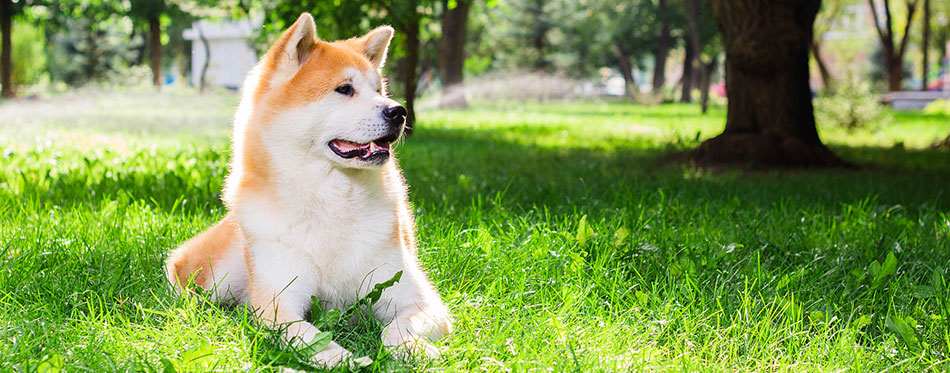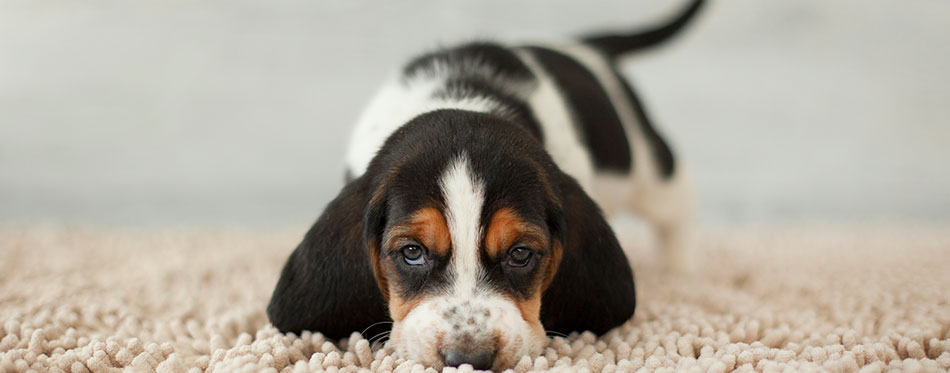Many pet parents think that only cats can get hairballs. Dogs, too, can have these balls of fur in their digestive tract. They can get it in pretty much the same way as cats. While self-grooming is one of the most common causes of hairballs, they can be the result of other activities that dogs engage in. In this article, we will explore some of the reasons why dogs get hairballs. This is a requirement if we want to deal with such a condition in a more effective manner.
Hairballs in Dogs
Before we start talking about the best homemade hairball remedy for your pet, let us first get a clear idea of what a hairball is.
As the term implies, a hairball is a clump of hair follicles that accumulate in the dog’s intestines. It is not a ball per se, owing to the tubular anatomy of the gut. As such, it is more cylindrical in shape.
Hairballs occur because hair follicles that the dog ingests do not move through the gut for it to pass out in the stool. Over time, they accumulate and harden to form a solid mass of fur. This can lead to partial or complete blockage of the intestines and cause a variety of symptoms.
It is natural for the dog to try to eliminate this mass of hair that is blocking its intestines. That is why it can produce an awful retching sound that many pet parents consider as the dog hairball sound. The dog will try to vomit the hairball out through its esophagus and mouth. It can be painful most of the time since this also entails vomiting some of the gastric contents. The inner lining of the esophagus is not as thick as the ones in the stomach and intestines. This makes it very susceptible to irritation coming from the acidic contents of the stomach.
If the dog cannot vomit the hairball, the hairball can grow in size. If there is a partial obstruction in the dog’s gut, this can lead to diarrhea. This occurs because only some of the fecal matter moves through the partially-obstructed gut. The stool turns out watery because only the liquid portion of the stool makes it through the rectum. If there is complete obstruction, this can lead to constipation. The blockage in the dog’s gut prevents the successful movement of stool.
We all know what happens if the dog has either diarrhea or constipation. It may lose its appetite and not feed for a few days. If this continues, there’s a possibility that your dog will have malnutrition.

Possible Causes of Hairballs in Dogs
Now that we have a clear idea of what hairballs in dogs are, let us look at why dogs have this condition. Here is a list of the possible causes of hairballs in dogs.
- Self-grooming
Dogs also groom themselves, although not as frequent as cats. When they do, they lick dirt, debris, and loose fur from their coat. This can turn into hairballs. This is often seen in dogs with long coats and breeds that are heavy shedders. The incidence of hairball formation is dependent on the functional status of their digestive tract. If it is functioning normally, then the strands of fur can pass through the gut with relative ease. However, it is still possible that hairballs can develop if there are too many strands of hair present in the gut.
- Skin Irritation
Dry and irritated skin almost always leads to hair loss in the affected area. The dog will try to lick or bite on the irritated skin in an attempt to soothe the irritation. It is unfortunate that by doing so, the dog can also ingest some of the loose hair. Skin irritation can be a sign of flea or tick infestation. Bacterial and fungal infections can also bring about skin irritation. Allergic reactions and food allergies can also lead to irritated and itchy skin.
Read here our guides on Essential Oils for Fleas on Dogs, Flea Treatment for Dogs and Flea Powder.
- Poor Nutrition
If the dog is not getting enough nutrients to strengthen its fur, there’s a chance that it will experience more severe hair loss. This can lead to the faster formation of hairballs during self-grooming. Two of the most important nutrients necessary for hair health are proteins and omega-3 fatty acids. If the dog is not getting the right amounts of these nutrients, then you can expect it to have more pronounced hair loss.
- Eating Prey
There are dogs that live their predatory instincts to the fullest by eating small prey animals like rodents. It is possible that the hair that forms into ball inside their gut is not their own hair. These can be the hair of the prey they feast on.
- Nursing Puppies
If puppies develop hairballs, it is often a consequence of their nursing activities. This is true if the mother dog has excessive hair around its nipples. It is for this reason that breeders often shave the belly of the mother dog.
- Anxiety and Boredom
Behavioral issues like boredom and anxiety can make dogs chew or nibble at their fur. This can increase the likelihood of your dog ingesting more hair than necessary.

Managing Hairballs in Dogs
Because there are many potential causes of hairballs in dogs, it is important to identify which is causing the condition in your pet. For example, if the root cause of the hairball is skin irritation, then your dog will need treatment for the irritation. At the same time, it can already receive treatment for the hairball in its gut. The following are the most common methods of managing hairballs in dogs.
- Surgery
If you notice your dog to be having a hard time trying to vomit the hairball, it is often a sign that it needs professional help. This is true if your dog is in obvious sign of distress or pain. In the case of complete intestinal obstruction, your dog may have to undergo surgery to have the hairball removed. This can only happen if you take your pet to the vet.
- Laxatives
If the obstruction is only partial, then your vet may order an appropriate laxative. These are medications that can soften the stool so that they pass through the dog’s gut a lot easier. Supplements may also be given to help lubricate the hairball so it passes through the gut.
- Olive Oil
You can also use a natural hairball remedy for dogs. One of the most common remedies for pet hairball is the administration of olive oil in the pet’s food. This aims to increase the lubrication in both the gut and the hairball. This makes it slippery and allows for the faster movement of the hairball through the gut. Do keep in mind that this will only work in hairballs that cause minimal to moderate obstruction. If the problem is complete obstruction, then surgery is the only remedy.
- Fish Oil or Canned Pumpkin
If you don’t like olive oil, you can also give fish oil supplement to your pet. It works on the same principle as putting olive oil in your dog’s food. Giving your pet canned pumpkin can also help as this can help break down the hairball. This makes it easier to pass the hairball through the dog’s gut.
Preventing Hairballs in Dogs
If you know the possible causes of hairballs in dogs, then it should be easy to prevent it. Here are some of the proven ways you can prevent hairballs in your dog.
- Regular Grooming
Since the major culprit in hairball formation in dogs is the ingestion of fur, regular and frequent grooming can help solve the problem. You will have to brush and comb your dog’s coat with an appropriate grooming tool. For best results, you can use a deshedding tool to help remove any loose fur that your pet may have. This will help reduce the amount of hair that your dog can ingest.
It is also helpful to have your pet get a regular trim. Longer hair can form hairballs a lot easier than shorter hair. Moreover, shorter hair can pass through the gut in a more efficient manner. Regular trimming every 3 to 4 months should help your pet keep its hair short.
- Proper Nutrition
Giving your pet dog food that is rich in proteins and omega-3 fatty acids can help strengthen its hair. This can help prevent excessive hair loss. If your dog is as fastidious as a cat in self-grooming, it will not be ingesting too much hair. Its coat will be strong enough to withstand the threat of being uprooted.
- Digestive Aid
Adding a homemade hairball remedy like canned pumpkin or fish oil supplement in your pet’s dog food can help lubricate its intestines. You can also add a teaspoon of olive oil into its food once a week to help pass the accumulated hair inside its intestines.
- Hydration
Improving the water intake of your dog can also help prevent the formation of hairballs. Keep in mind that dehydration can make your dog more prone to hairballs since the intestinal lining can be dry.
Dogs can have hairballs, too. Knowing the causes of hairballs in dogs can help you manage it in a more efficient manner.
Source:
- Do dogs get hairballs? – AMC

